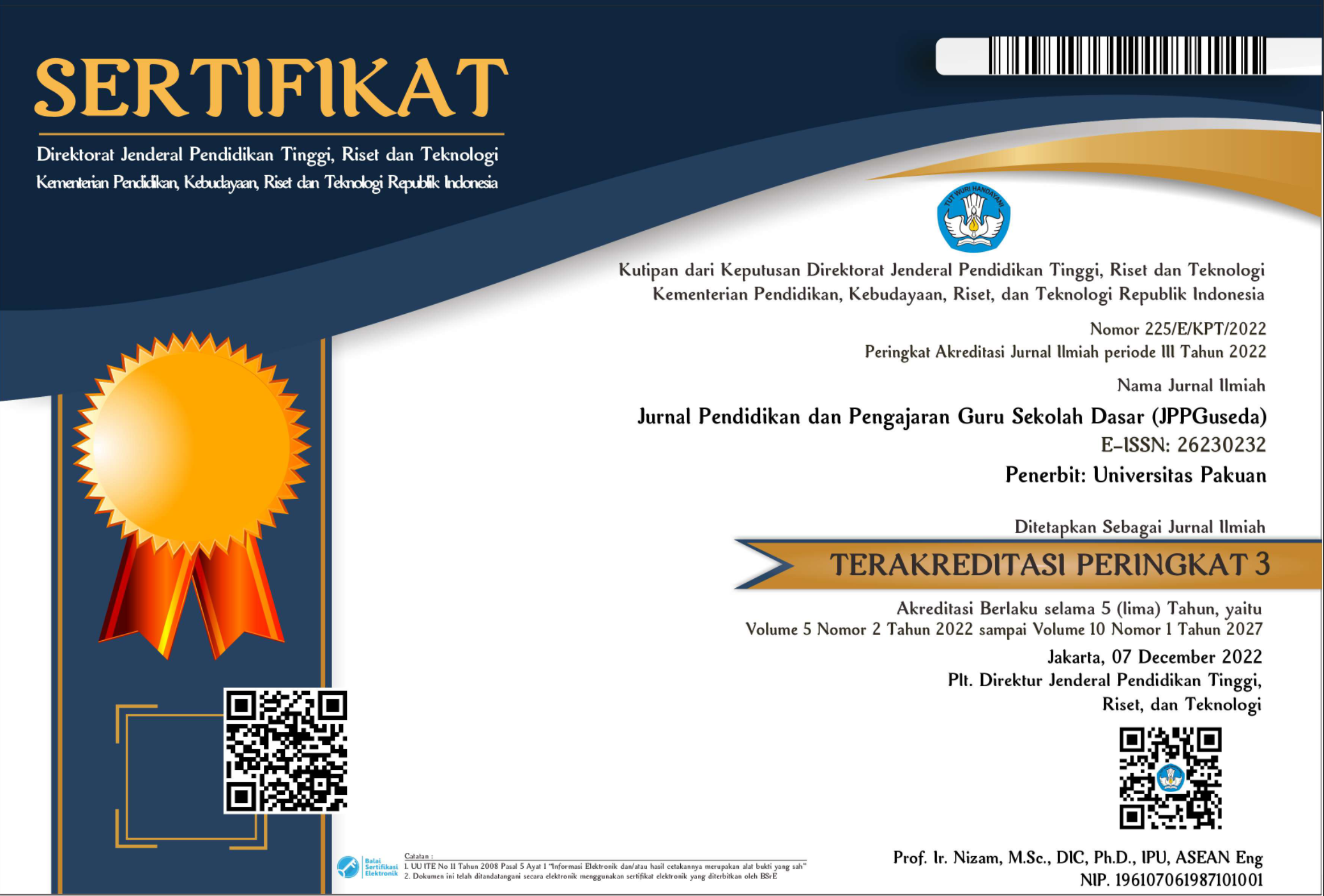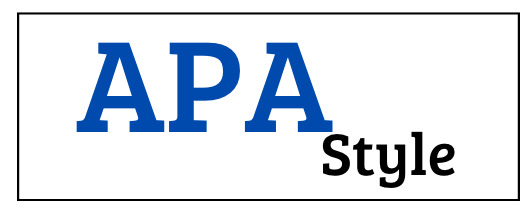EVALUATION OF CLEAN AND HEALTHY PRIMARY SCHOOL PROGRAM IN BOGOR
Abstract
Keywords
References
N. K. M. S. R. N. C. Otten, “Supporting children's health literacy development: A systematised review of the literature,” International Journal of Educational Research, vol. 115, 2022.
I. Retmana, “Implementasi Dukungan Kebijakan Sekolah Dalam Upaya Peningkatan,” EDUCATIVO: JURNAL PENDIDIKAN, vol. 2, no. 1, pp. 39-48, 2023.
N. W. Arini, “ Pengaruh Lingkungan Terhadap Hasil Belajar Peserta Didik.,” Adi Widya: Jurnal Pendidikan Dasar, vol. 1, no. 1, 2019.
Kementerian Kesehatan RI, “Profil Kesehatan Indonesia Tahun 2019,” Kementerian Kesehatan RI, Jakarta, 2020.
C. M. H. J. D. P. A. J. L. J. M. Z. W. I. P. &. N. Z. H. Susanto, Pedoman Pembinaan dan Pengembangan UKS/M, Jakarta: Direktorat Jenderal Pendidikan Dasar dan Menengah Kemdikbud, 2019.
P. R. Indonesia, Peraturan Bersama antara Menteri Pendidikan dan Kebudayaan Republik Indonesia, Menteri Kesehatan Republik Indonesia, Menteri Agama Republik Indonesia, dan Menteri Dalam Negeri Republik Indonesia Nomor 6/X/PB/2014 Nomor 73 Tahun 2014, Nomor 41 Tahun 2014, Pemerintah Republik Indonesia, 2014.
Kementerian Pendidikan Dan Kebudayaan Direktorat Jenderal Pendidikan Dasar Direktorat Pembinaan Sekolah Dasar, Panduan Pembinaan Sekolah Dasar Bersih dan Sehat, Jakarta: Kementerian Pendidikan Dan Kebudayaan Direktorat Jenderal Pendidikan Dasar Direktorat Pembinaan Sekolah Dasar, 2013.
S. &. S. I. Angraeni, Pedoman Pengembangan Sanitasi Sekolah Dasar, Jakarta: Kementerian Pendidikan dan Kebudayaan., 2018.
T. &. H. I. N. Nasiatin, “Determinan Perilaku Hidup Bersih dan Sehat Pada Siswa Sekolah Dasar Negeri,” Faletehan Health Journal, vol. 6, no. 3, pp. 118-124, 2019.
J. S. H. H. P. &. N. K. E. Wholey, Handbook of Practical Program Evaluation, Jossey-Bass, 2010.
T. S. &. I. M. Aryanti, “Evaluasi Program Pendidikan dan Pelatihan,” Jurnal Pendidikan Nonformal, vol. 10, no. 1, pp. 1-13, 2018.
S. L. N. &. H. D. Tan, “CIPP as a model for evaluating learning spaces,” in Australian Learning and Teaching Council, Australia, 2011.
S. I. B. &. S. B. S. Zubaidah, “Evaluasi program sekolah sehat di Sekolah Dasar Negeri,” Kelola: Jurnal Manajemen Pendidikan, vol. 4, no. 1, pp. 72-82, 2017.
D. L. Stufflebeam, CIPP Evaluation Model Checklist, Better Evaluation, 2007.
R. &. R. T. Ananda, Pengantar Evaluasi Program Pendidikan, Perdana Publishing, 2017.
Sugiyono, Metode Penelitian Pendidikan, Alfabeta, 2015.
Kementerian Kesehatan, Pedoman Pembinaan Perilaku Hidup Bersih dan Sehat (PHBS), Jakarta: Kementerian Kesehatan, 2011.
C. M. E. W. G. K. N. G. A. &. M. N. Somers, “Effects of a Comprehensive School Health Program on Elementary Student Academic Achievement,” Journal of School health, vol. 91, no. 3, pp. 239-249, 2021.
Slameto, Strategi Implementasi Manajemen Berbasis Sekolah (MBS) dengan Profesional, CV. Penerbit Qiara Media, 2019.
I. P. I. S. &. D. L. Sari, “Peningkatan Mutu Physical Evidence di Sekolah Dasar melalui Gerakan Toilet Ramah Anak,” Jurnal PKM Pengabdian Kepada Masyarakat, vol. 1, no. 2, pp. 128-135, 2018.
P. T. A. S. T. &. A. D. Barrett, “The Impact of School Infrastructure on Learning: A Synthesis of the Evidence.,” World Bank Publications, 2019.
N. F. Anita Yulianingsih, “Analisis Perilaku Hidup Bersih dan Sehat di Sekolah Dasar,” Jurnal Pancar (Pendidik Anak Cerdas dan Pintar), vol. 6, no. 1, pp. 193-199, 2022.
Slameto, elajar dan Faktor-Faktor yang Mempengaruhinya (Edisi Revisi, Cetakan 6 ed.), Rineka Cipta, 2015.
“Sismantik: Siswa Pemantau Jentik Sekolah Dasar dalam Upaya Penurunan Kasus Demam Berdarah Dengue (DBD),” Jurnal Pengabdian kepada Masyarakat, vol. 5, no. 2, pp. 199-199, 2019.
B. P. M. &. Y. E. Vera, “rajurit Alam: Introduction to Waste Separation Education for First and Second Grade Elementary School,” in IOP Conference Series Earth and environmental Science, 2021.
D. C. J. L. L. H. M. &. M. S. Zhang, “The Waste Separation behaviour of Primary and Middle School Students and Itsinfluencing factors: Evidence from Yingtan City, China,” Environmental Research Communications, vol. 5, 2023.
DOI: 10.55215/jppguseda.v6i3.8939
 Abstract views : 376
Abstract views : 376
Refbacks
- There are currently no refbacks.
Copyright (c) 2023 Jurnal Pendidikan dan Pengajaran Guru Sekolah Dasar (JPPGuseda)

This work is licensed under a Creative Commons Attribution-NonCommercial 4.0 International License.




















